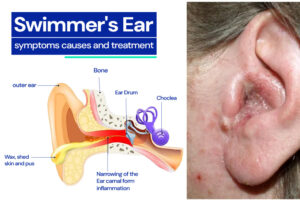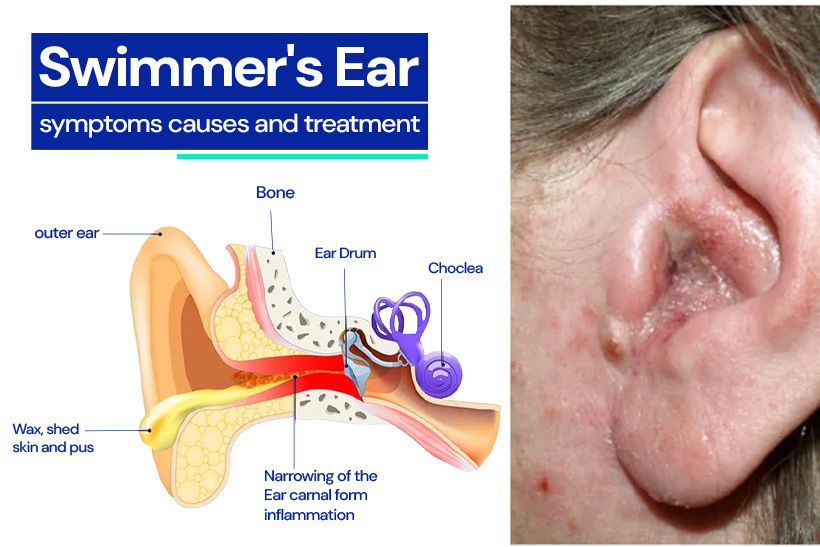 What is Swimmer’s Ear?
What is Swimmer’s Ear?
Swimmer’s ear, medically known as otitis externa, is an infection or inflammation of the external auditory canal (the outer ear). It is commonly seen in swimmers due to prolonged water exposure, which creates a moist environment ideal for bacterial or fungal growth. While it is usually not serious, it can cause significant discomfort and, if left untreated, may lead to complications.
Causes of Swimmer’s Ear
The primary cause of swimmer’s ear is a bacterial infection, most often due to:
- Staphylococcus aureus
- Pseudomonas aeruginosa
In some cases, fungi or viruses may also be responsible. Other risk factors include:
Frequent swimming or water exposure (especially in contaminated water)
Diabetes or a weakened immune system (making infections more severe)
Excessive ear cleaning with cotton swabs, which can damage the ear canal
Skin conditions like eczema or psoriasis, which can break the skin barrier
Symptoms of Swimmer’s Ear
If you have swimmer’s ear, you may experience:
✅ Ear pain or tenderness (worse when touching or moving the ear)
✅ Itching or irritation inside the ear canal
✅ Discharge from the ear (clear, yellow, or pus-like)
✅ Redness or swelling of the outer ear
✅ Hearing difficulty (muffled sounds or temporary hearing loss)
✅ Fever (in more severe cases)
How is it Diagnosed?
Swimmer’s ear is usually diagnosed clinically by a doctor based on symptoms and an ear examination. In some cases, if the infection is severe or persistent, a sample of the ear discharge may be taken for microscopy, culture, and sensitivity testing to determine the exact cause and best antibiotic treatment.
Treatment and Management
Most cases of swimmer’s ear can be treated effectively with:
- 🩺 Topical antibiotics (ear drops such as Neomycin or Ciprofloxacin)
- 💊 Oral antibiotics (for more severe cases or if the infection spreads) ⚠️ If allergic to penicillin, alternative antibiotics will be prescribed
- 💊 Pain relief medications such as NSAIDs (Non-Steroidal Anti-Inflammatory Drugs) like ibuprofen help reduce pain and swelling
- 🧼 Aural toileting (Ear cleaning): This involves careful cleaning of the ear canal by a healthcare provider to remove debris and discharge
🚨 When to See a Doctor?
Seek medical attention if:
- Symptoms persist or worsen despite treatment
- You develop high fever, dizziness, or severe ear pain
- You have diabetes or a weakened immune system, as complications can be more serious
Preventing Swimmer’s Ear
To reduce the risk of getting swimmer’s ear:
✔️ Keep ears dry.Tilt your head after swimming to drain water
✔️ Avoid inserting cotton swabs or sharp objects into the ear
✔️ Use earplugs or a swim cap if you swim frequently
✔️ After swimming, use alcohol-based ear drops to help dry excess moisture
Final Thoughts
Swimmer’s ear is a common yet preventable condition. By keeping your ears dry and avoiding irritants, you can significantly lower your risk. If you experience symptoms, early treatment is key to a quick recovery.
Stay safe, swim smart, and protect your ears!




